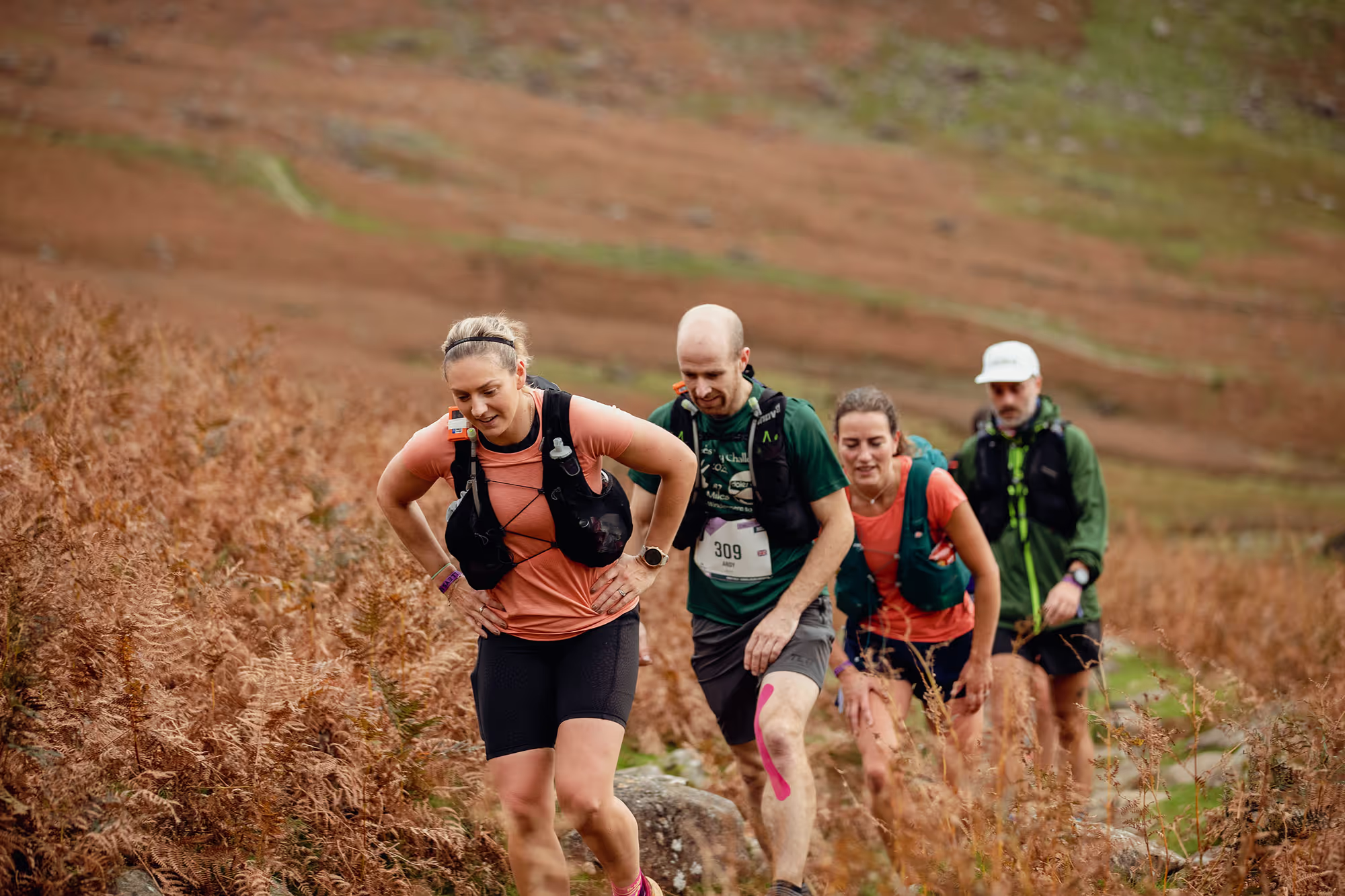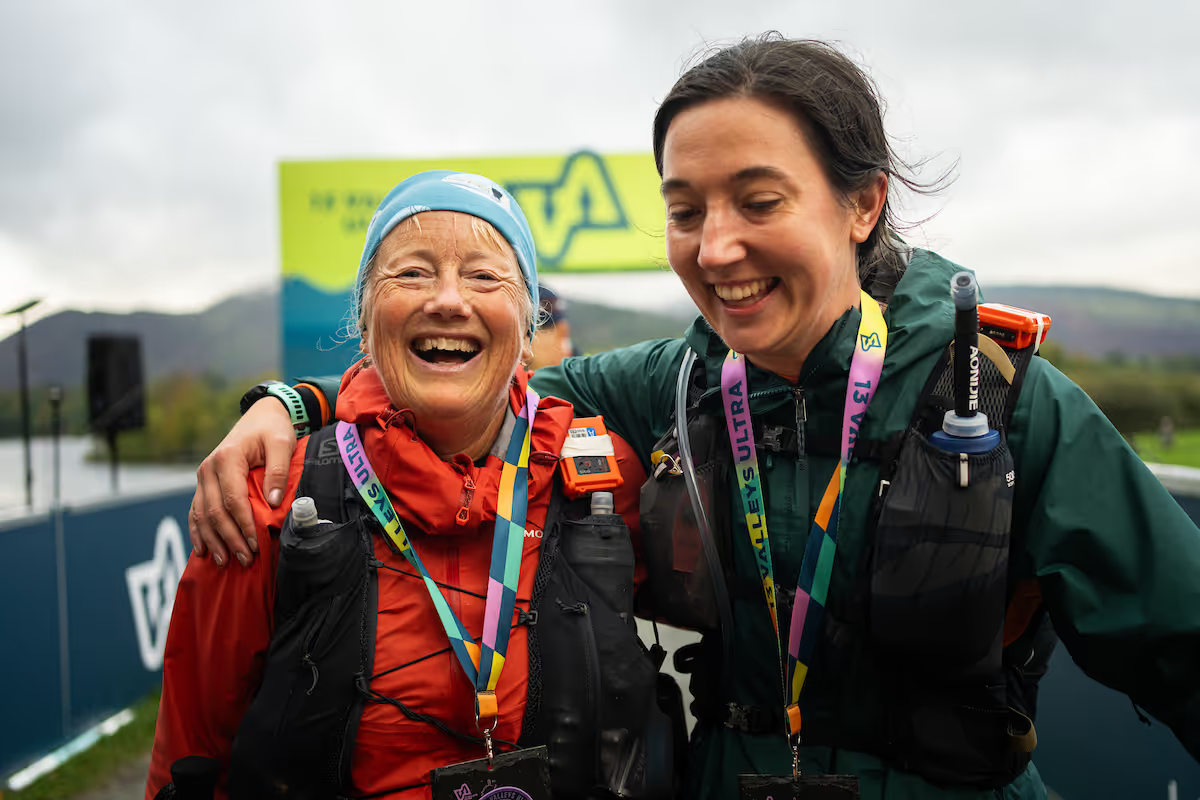Running is addictive. And once you’ve been bitten by the running bug, it can be really tempting to push yourself further or faster. You might have a solid routine and a race or two under your belt and then start thinking: is this…it?
If you’re starting to explore what could be next on the list, you may have come across the term ‘ultra running’. What is ultra running? And what do you need to know if you’re considering making the leap from road running to ultras?
Read on to find out…
So, what IS an ultra run?
Technically, an ultra run is anything longer than a marathon, so 26.2 miles or 42km - although in reality, lots of ultras start at the 50km (or 31 mile) mark. Some ultra running events, like the 13 Valleys Ultra, take a number of days, with runners stopping to sleep at various points on the way.
On the other hand, there’s also trail running. Generally, trail runs can be as short or long as you want them to be, however, the big difference between trails and road running is the terrain. Trail running is on uneven terrain such as gravel paths, grass, sand or even mud! There are usually plenty of ascents and descents, but the great thing about trail running is that you can mix running and walking, especially when going uphill.
Of course, there’s some crossover between ultras and trail runs. Many ultras involve sections with trail-like terrain, and many trail runs cover longer distances than marathons. The important thing to know, however, is that there are lots of options, with some better suited to runners making the move from road running to something a little bit different. May we recommend the 2 Valleys Trail as a first trail event, it’s the same distance as a half marathon and is fully waymarked.
Making the mindset leap
One of the most daunting aspects of making the leap from road runs to ultras or trails is mindset. Ultra runs just sound more intense. And once you start looking at distances, 50+km (or 31+ miles), they can definitely start sounding a little, well, scary.
But don’t let your brain fool you into thinking you’re not up to ultra standard. With road races, there’s often an expectation that you attempt to run the whole way; with ultras, the opposite is true. In fact, we highly encourage entrants to stop at the checkpoints, refuel and have a chat before taking on the next stretch. Runners are not expected to run the whole way on an ultra, on the contrary, it’s all about taking your time to enjoy the scenery in front of you, walking when you’re going uphill so you keep your strength for the more flowy trails.
And the rewards of ultra and trail running are immense. Unlike road races where you’re often crammed in with thousands of others, ultras and trails give runners the opportunity to spread out, chat with other runners and supporters, reconnect with themselves and soak up the natural world.
It's not so much about speeding up, but rather slowing down - mentally and perhaps even physically, depending on your goals.

Speaking the language
Another barrier to ultra runs or trail is the language. Even the definition of ‘ultra’ and ‘trail’ itself can be confusing, as we’ve explored above. Don’t be put off by the jargon, though - understanding it is key to taking on your next challenge.
A couple of need-to-knows: lots of races will mention GPX files. Don’t worry about these - it simply describes the files many race organisers use to share their event routes. You’ll need to download a smartphone app such as Trava or OS Maps, or on your GPS watch. Once the file is saved you can just follow the route and it’s one less thing to think about on the day.
All this refers to are the points of reference runners use alongside official race signs to mark progress along long ultra and trail routes. On conventional road routes, it’s pretty difficult to deviate and go off course, but over long, more rural distances it’s easier to go astray - so keep your eyes peeled. Waymarking is particularly important because not all ultra and trail runs use conventional signing -so familiarise yourself with your route ahead of the event (for example by doing recce days) and have your GPX file at the ready! Both 2 Valleys and 5 Valleys Ultra events are fully waymarked which means the whole route is signposted if you don't want to use a GPX.
Key Equipment
Another off-putting factor is the idea that you need lots of specialist equipment to be an ultra runner, but that’s another ultra-running myth.
In our runners guide, we insist on the following essentials - the rest is up to you:
- A fully charged mobile phone
- Debit/credit card
- A running pack or vest
- Foil survival blanket
- Water bottle or collapsible cup
- 1L of water and some running snacks/gels
- Closed-toe running shoes
You’d need most of these for a road run anyway - plus a cap, sun cream, glasses, waterproof jacket depending on the weather, of course.

The Benefits
Ultra running is a totally different experience to road running. 13 Valleys runners can expect an incredible challenge in jaw-dropping surroundings, with all the lakes, mountains and mind-blowing views you’d expect from the UK’s most popular National Park.
Plus, there’s the unrivalled mindfulness that comes with submitting to your surroundings over a long distance, the community you build with other runners along the way and an unbeatable sense of achievement as you cross that finish line.
So don’t let ultras put you off - they’re far more doable and inclusive than they might sound - especially 13 Valleys, where you can choose the level of challenge to suit you, starting from 2 Valleys (21.4km). Find out more - and enter - here .